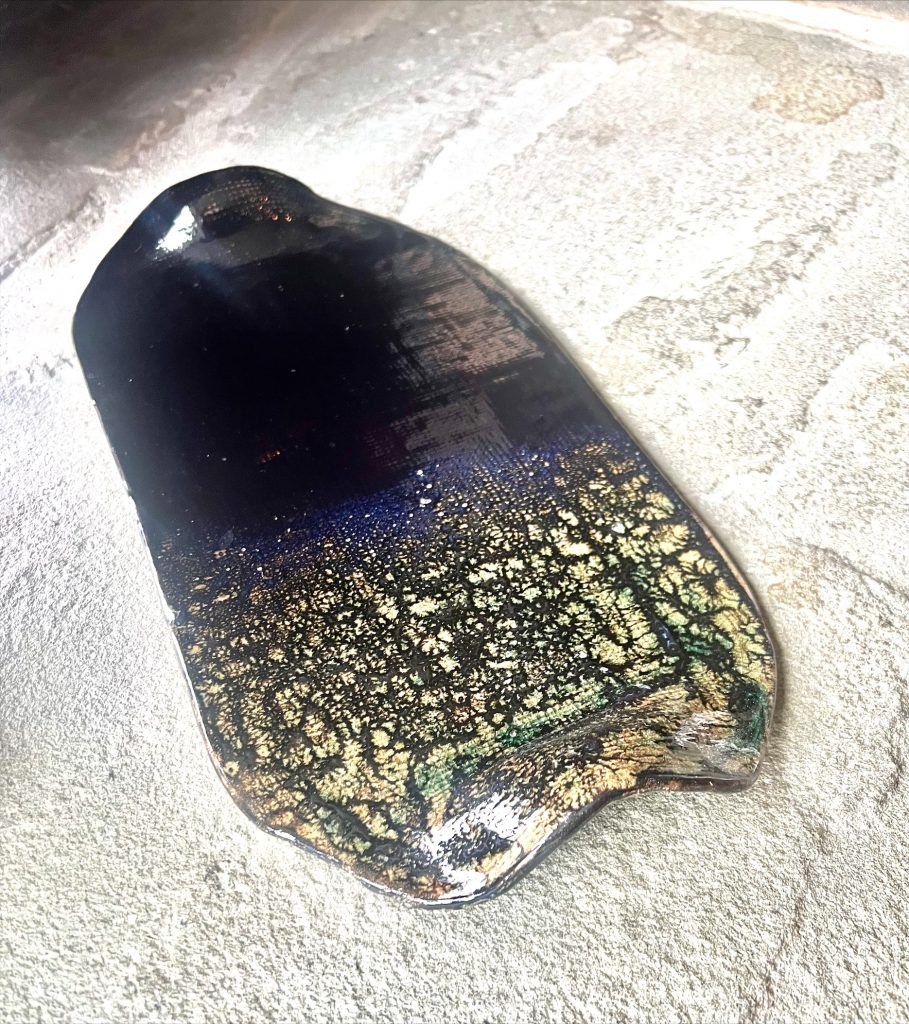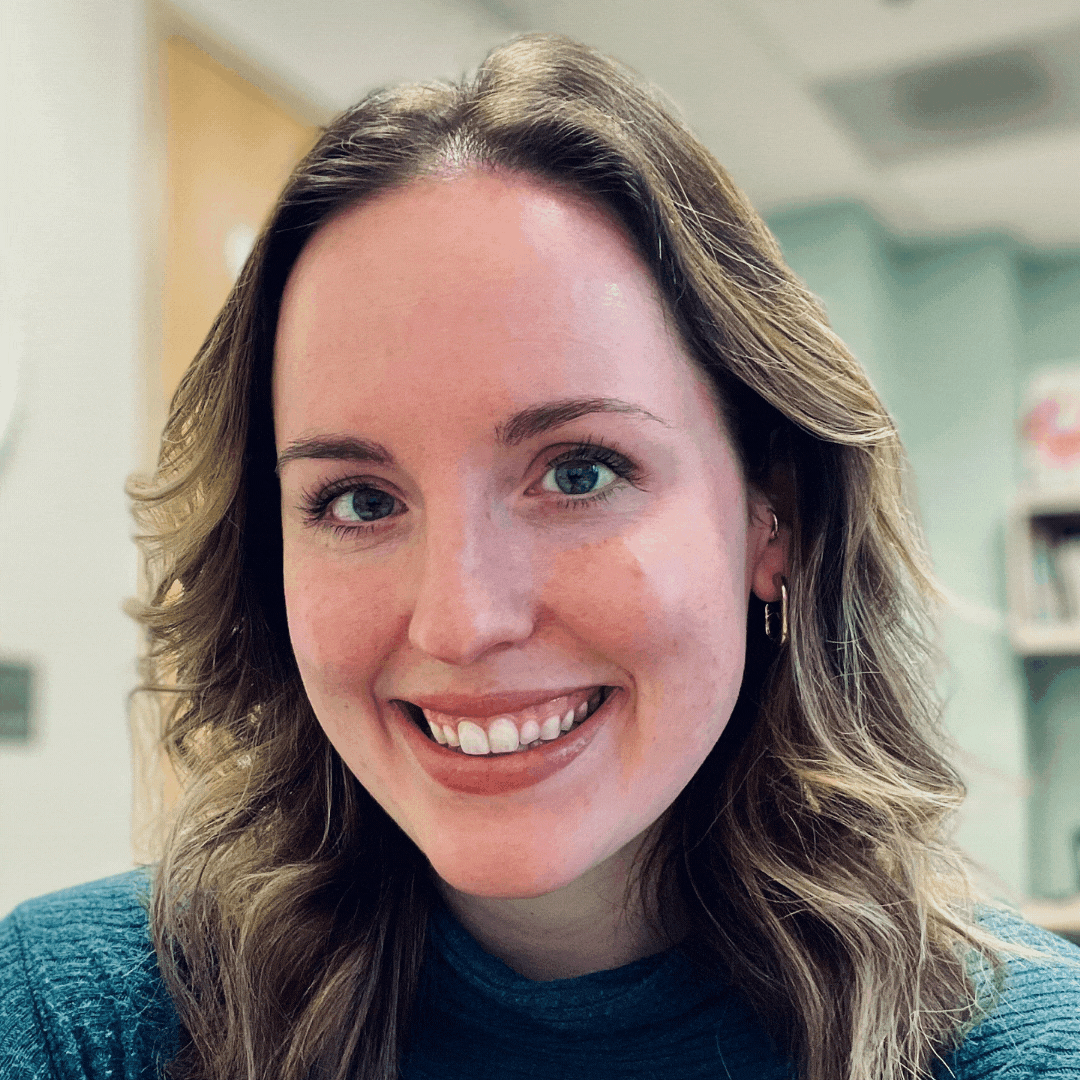The American Art Therapy Association represents a diversity of professionals, students, and organizations across the nation. We recognize and celebrate the work of our members at all levels through our Featured Member series.
March 24, 2022
What excites (or inspires) you most about your job right now?
I have recently transitioned into working with high-risk obstetrics after most of my career in pediatric medical art therapy. My hospital has just opened a comprehensive Mother Baby Hospital to take control of Indiana’s infant mortality rate and curate a holistic healing environment for high-risk moms and babies. I’ve created programming that will hopefully help reduce stress and anxiety while moms are on bed rest, provide outlets to nest and prepare for the baby, allow therapeutic continuity from admission throughout typical lengthy NICU stays, and ultimately provide control over the uncontrollable. The resiliency of these parents and the lengths families go to give the best outcome for their babies, no matter what that looks like, is awe-inspiring.
Has working with a particular client group shaped your professional focus or specialty? What have you learned from working with these clients?
Working with medically fragile children has definitely shaped who I am as a therapist and a person. I have learned so much from the resiliency of my patients, all of whom understand the meaning of life more than I can at two to three times their age. I’ve learned that the smallest moments make the biggest impact. I’ve learned there is always time, even on the busiest of days, to sit on the floor and make play-doh unicorns. And when there isn’t any more time, the artwork you’ve created leaves such a beautifully unique legacy to cherish.

“Untitled,” by Emily Allbery. Earthenware, burlap, glaze – hand built ceramic platter. 2020. Artist statement: “I typically view my own artwork as a way to share my love with other people. Which typically means the majority of my art lives in the homes of people I love. I enjoy making utilitarian pieces that can live in every day; making beauty out of the mundane.”
How has your role changed as an art therapist (or remained the same) during the COVID-19 pandemic?
Of all the places art therapists can work, I would say those of us in the medical field were some of the most prepared once the pandemic hit. With thorough cleaning procedures already in place, we were able to lean into the science we already trusted to keep our patients and their families safe. However, being an essential employee during a global pandemic was a new feat even for the most seasoned of us. Our work shifted slightly with the addition of some remote work but we have continued to serve our patients throughout this time. I appreciate that my hospital continued to prioritize the patient’s emotional health and kept our creative arts therapies on-site to provide such much-needed support.
What advice would you give someone interested in pursuing a career in art therapy? Or, is there something you would like to share about your journey thus far as an art therapist?
One of the most important things I try to impart on my students and interns is that there is no way to encompass something so profound and expansive as art as a tool for healing within a two to three year graduate program. Absorb everything you can now, but know that you will continue that learning process throughout your entire career.
Emily Allbery, MA, ATR-BC, LPC
 Emily Allbery, MA, ATR-BC, LPC (she/her) is a board-certified art therapist and licensed professional counselor at Riley Hospital for Children at Indiana University Health in Indianapolis, IN. She earned her Masters in Art Therapy at The School of the Art Institute of Chicago and her Bachelors in Art Education at Miami University; where she is currently an adjunct instructor leading the university’s undergraduate art therapy program. Emily has been a pediatric medical art therapist and graduate intern supervisor since 2014. She has spent much of her career helping hospitalized children and their families cope with chronic and life-threatening illnesses. Emily has recently transitioned some of her focus to maternity health, supporting hospitalized high-risk mothers through their medical journey. Her ancillary contributions have included creating standards for innovative legacy pieces for families at end-of-life as well as programming to spread the positive benefits of artmaking across the hospital landscape. Emily has also spoken countless times at the regional and national level on the intersection of art therapy and art education.
Emily Allbery, MA, ATR-BC, LPC (she/her) is a board-certified art therapist and licensed professional counselor at Riley Hospital for Children at Indiana University Health in Indianapolis, IN. She earned her Masters in Art Therapy at The School of the Art Institute of Chicago and her Bachelors in Art Education at Miami University; where she is currently an adjunct instructor leading the university’s undergraduate art therapy program. Emily has been a pediatric medical art therapist and graduate intern supervisor since 2014. She has spent much of her career helping hospitalized children and their families cope with chronic and life-threatening illnesses. Emily has recently transitioned some of her focus to maternity health, supporting hospitalized high-risk mothers through their medical journey. Her ancillary contributions have included creating standards for innovative legacy pieces for families at end-of-life as well as programming to spread the positive benefits of artmaking across the hospital landscape. Emily has also spoken countless times at the regional and national level on the intersection of art therapy and art education.
